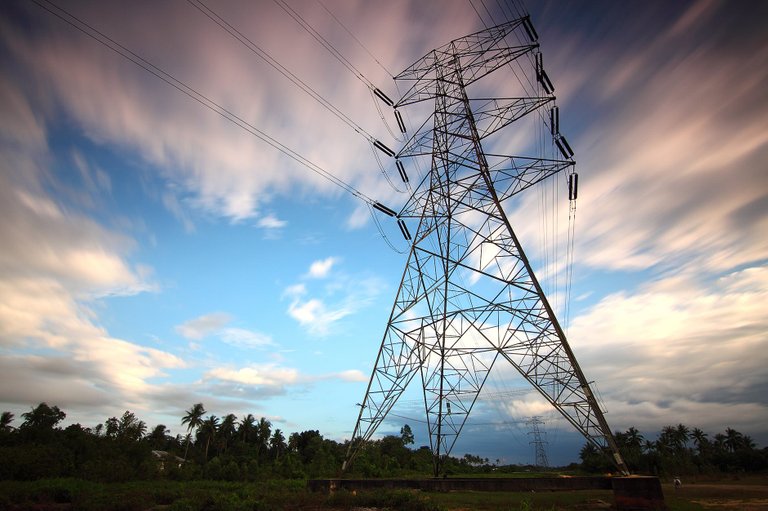
over head transmission line [source]
The concept of electromagnetic waves has fascinated man for so many years that man has asked so many questions varying from why does stars twinkle? to why does magnetic needle deflect? to why does light travel from sun when there is no medium between?.
In modern day,questions varying from how do we have tv reception? to how do we have a radio station operating to how does a mobile phone work?, why are certain things heated when they are kept in side a microwave all these phenomenon revolves around electromagnetism
Electromagnetism can be divide into;
(1) low frequency and high power
(2) high frequency and low power
In this article, we shall concentrate on the high frequency and low power properties of electromagnetic waves. The phenomenon like electrical machines,electrical power generators,transformers,distribution of electrical energy fall into the category of low frequency high power. Whereas in modern systems like mobile communications, radars ,satellite,optical fibers,fall into the high frequency low power. So we mainly investigating what happens as frequency increases in electromagnetic waves and how they can be transmitted from one position to another without loss.
Electromagnetic waves sees application in many areas namely:
(1) transmission lines and HF circuits
(2) antennas
(3) satellite communication.
(4) fiber optic communication.
(6) radars.
(7) radio astronomy.
(8) EMI/EMC (Electromagnetic Interference and Electromagnetic Compatibility).
We intend to investigate how time varying electrical and magnetic field behaves especially when the frequency of operation is large. These investigation is going to be based on maxwell's four equation of electromagnetism. However, as we proceed certain approximations can be used to investigate the same phenomenon in terms voltage and current which are electrical circuit
Electromagnetic Spectrum: The word electromagnetic spectrum corresponds to any phenomenon which relates the time varying signals and time varying electric or magnetic fields. Any wave no matter how small can be put in the category of time varying electric or magnetic fields.
The entire frequency range from very low frequencies to very high frequencies can be summarized as Radio Frequencies
Depending on frequency of operation there rare different media to transmit the electromagnetic waves. When the frequency is between 30MHz to 300MHz the coaxial cable is used for transmission of the wave, from 30GHz to 300GHz the structure used is called a wave guide, and as the frequency goes high we media used is the optics fiber.
A questions that comes to mind in electromagnetic wave transfer is 'why do we have to increase frequency?' if we consider the major application of high frequency in communication, then for transmitting more information we require large bandwidth. Since the frequency of operation is proportional to the bandwidth, by increasing frequency of operation we increase the bandwidth and as such one can transmit more information on a given channel.
Transmission Line: In transmission lines our main concern is

power transmission line [source]
how voltage and current would flow in a two conductor system called a transmission line.
Two type of transmission media is the
(1) __twisted pair__and (2) coaxial cables both of which are point to point lines.
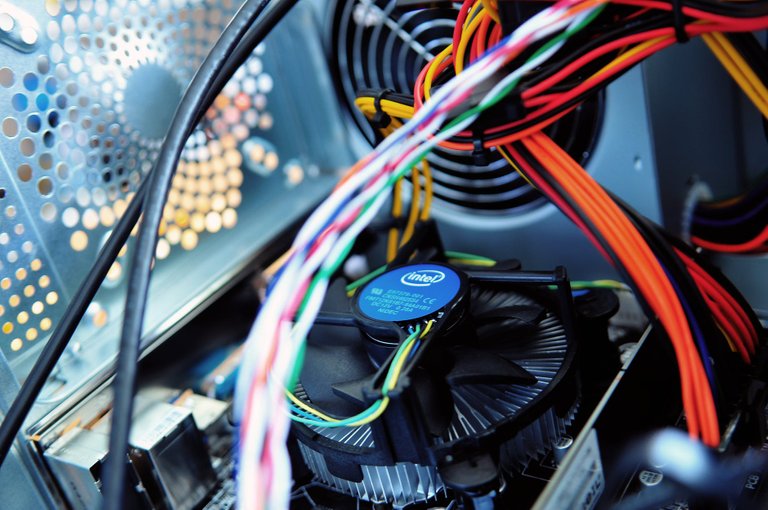
Twisted pair of wire [source]
Example of the twisted pair is the telephone wires;it characterizes low data rate, high EMI and it is lossy at RF. For the coaxial cable we have example in the LAN cable; It characterizes data rates of up-to few Mbps, low EMI and moderate loss. When the frequency becomes high in other to reduces loss we use hollow circular or rectangular pipes called wave guides .
Inside an hollow metal conductor , an electromagnetic wave can propagate and here rigorous analysis of electromagnetic wave carried out to help find out what the field distribution would look like and how much energy loss will take place inside.
Antennas

an antenna [source]
An antenna is a device which can transmit electromagnetic energy into space and also can receive electromagnetic energy coming from space. An example is the parabolic dish antenna, signal from point are like parallel rays that the parabolic dish antenna then converge to focal point called the feed. Other more advanced antenna systems called the smart antennas they have the ability to selectively push the radiation in the desired direction.
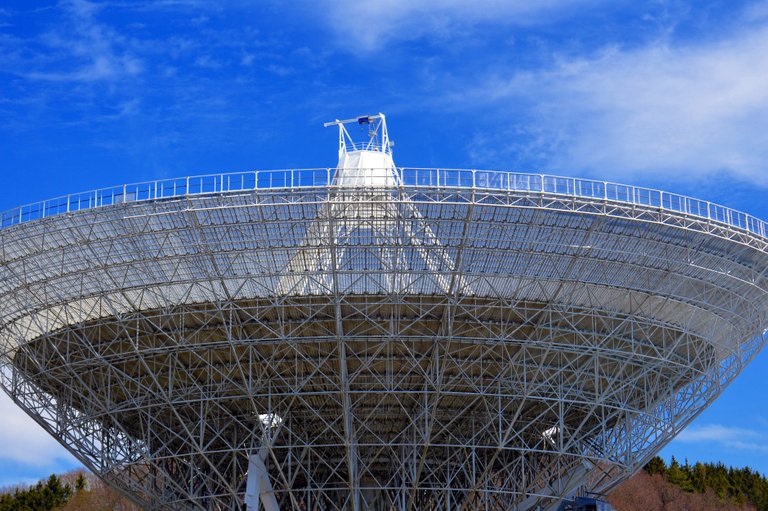
space antenna [source]
A simple antenna structure may not necessarily provide the desired characteristics of modern day smart antenna systems were radiation characteristics can be automatically changed to maximize the reception of the signal.
Switched beam antenna has multiple beams and beams can be switched or can be placed inside the space on permanent basis and depending upon which area the observer is, the signal can be transmitted or received from that zone. This can be done by controlling the radiation characteristics antennas.
Satellite Communication
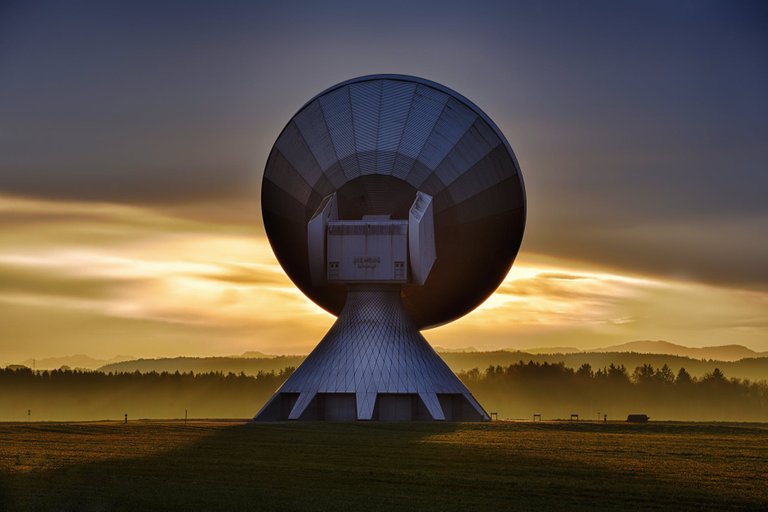
beam antenna [source]
A satellite is an object that is placed about the earth surface. The satellite on earth surface usually called the earth station which transmit signal from the earth to satellite and also receive signals from the satellite to the earth. Certain frequency bands are assigned for satellite communication. Satellite communication is a point to multi-point system. The whole propagation of the electromagnetic radiation and proper placing of radiation in the direction towards the earth is done by by electromagnetic wave phenomenon. Satellite communication has large delay because of the turn around trip taking from earth station to satellite and satellite back to earth station.
Fiber Optics Communication
knowledge of electromagnetic wave is required to investigate the propagation of light inside a fiber optic material. Fiber optic cable is made up of very thin hollow glass strand which light is reflected internally.
As the light propagate inside the optical fiber, the signal get distorted and hence we need the knowledge of electromagnetism is needed to know how the signal gets distorted.
Wireless Communication
Wireless communication is used in cell phones and most modern system like the home entertainment system using blue-tooth speaker, laptops using wireless method to connect to routers and so on. All these work on the principle of electromagnetic waves.
Cellular Communication
In cellular communication, we have the base station from where the signals are transmitted, all users are located inside is called a cell. So any mobile call made goes from handset to base station in that sector and then goes to the desired handset in the sector.
It is observed that cell phone user has signals from multiple path all coming to his cell phone. The handset does not only get signals coming directly from the base station but also from refection from associated objects. As a result a phenomenon of interference which could either be constructive or destructive.When there is a constructive interference there is a strong signal strength an when destructive interference there is a weak signal strength and the gradual destructive interference of the signal is called fading. To understand fading phenomenon a good knowledge of electromagnetic waves is required.
Antennas and antenna systems To avoid fading phenomena,the antennas in the handset uses sectioned propagation pattern. This implies that the cell phone uses this type of antenna so that it gets its signal from the base station directly while minimizing signals from paths not in the direction of the base station of the antenna. A good knowledge of electromagnetic waves is required to design this system.
Radar And Remote Sensor
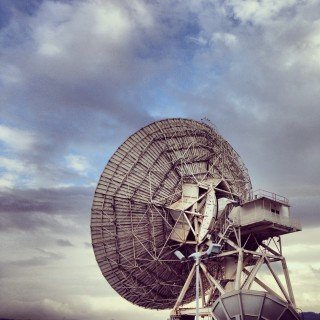
radar antennas [source]
In radar altimetry, electromagnetic waves is used for finding distance of an object. The antenna is excited with electromagnetic pulse and the dish beam parallel electromagnetic waves downwards that is reflected from the surface back to the dish. The dish converges the parallel received signal back to the antenna. The detector carries out the processing of the signal.
From transmission to reception of the electromagnetic pulse, the distance can be estimated and also if the object is moving in the radial direction, there would be a frequency change between signal transmitted but antenna and the signal received(Doppler shift) and from there one can estimate the velocity of the object. The distance and velocity of the object by the radar using the electromagnetic pluse.
Synthetic aperture radar (SAR)
To improve the resolution in remote sensing, a technique called the synthetic aperture dish is used. For an antenna like a parabolic dish, the angular resolution is given as the wavelength divided bt the six or diameter for the antenna. To get a fine resolution for the image in remote sensing, a very large aperture D is required. A large D can not be easily created especially in moving vehicles which are moving.
Atechnique where the antenna is small but the vehicle moves and as the vehicle moves, the reflection information is stored and after all the refection information is collected from different locations, then data processing can be done to get an angular resolution which will correspond to the total distance traveled by the vehicle. This technique is known as the synthetic aperture radar.
SAR Features
(1) very high linear resolution independent of range.
(2) requires source with higher coherence.
(3) image is on range-doppler coordinate grid.
(4) requires a large data processing.
(5) geometric and ratio metric distortions.
(6) speckle noise.
Radio Astronomy
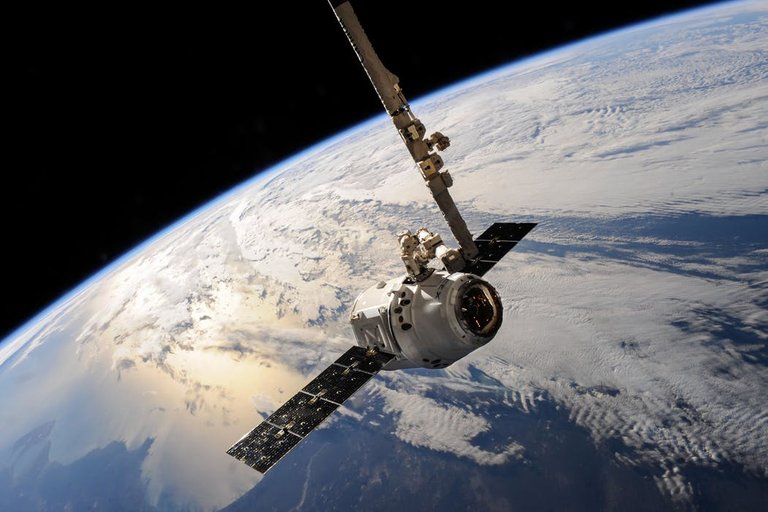
astronomy and space science radio astronmy [source]
The frequency of the signals are converted, detected and processed. With radio telescope we would like to get the image of the sky with as large resolution as possible. Lambda comes into the picture and to get a very fine resolution of the image of the sky a very large telescope would be needed. Producing a very large telescope would be difficult again the aperture synthetic technique is used as it where on radars. In this method we use a set-up of antennas for example, if the dish in each array is of order of D=25m and the total spread of the antennas of the order of 21KM. Therefore, we get an effective aperture though each antenna has an aperture of only 25m.
EMI/EMC (Electromagnetic Interference and Electromagnetic Compatibility).
EMI iss electromagnetic interference, first we investigate how a high frequency device would create interfering signals and then what ways by which the interference can be reduced. For example you may get interference on our radios, whenever somebody starts a car or a motor cycle in the vicinity, because starting a car or motor cycle involves sparking and because of that spark, you get electromagnetic interference which is picked up by the radio antenna and you get disturbance on your radios, it is essential to investigate the technique by which the interferer can be reduced or mechanism by which the devices can be isolated. This technique is called shielding.
EMC: today, whenever we design electromagnetic gadgets or electrical device it is mandatory to make it electromagnetically complaint so it does not create additional electromagnetic interference which will affect the other systems.
THANKS FOR READING THROUGH!!!
References
• Lecture Note

Being A SteemStem Member
Congrats! I featured this post recently, along with suggesting others take a look at it. You did an informative write up of transmission lines and I'm impressed with your view to vote ratio (a rare accomplishment on SteemIt after a short period). Keep up the good work @hboi!
(While I know bots are common - this isn't a bot or automated message). Some of us still keep it real!
Indeed great appreciate for this...thanks for coming through